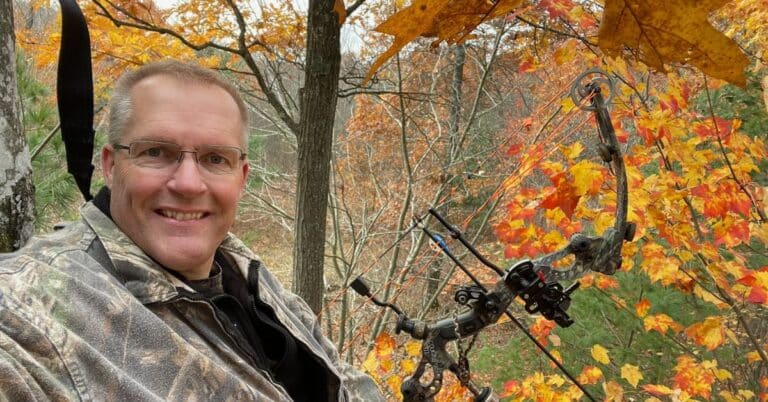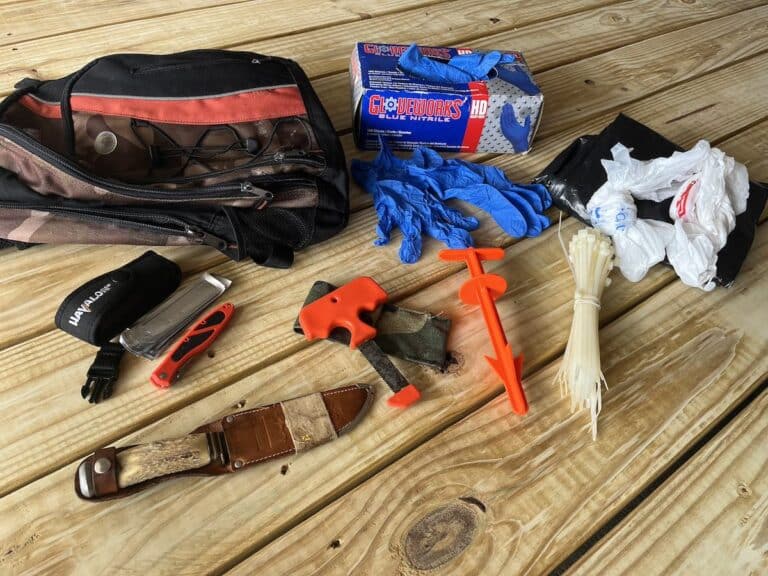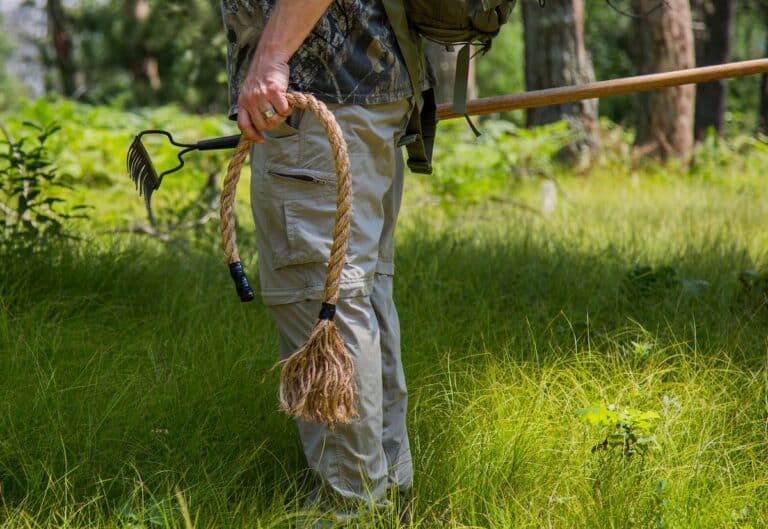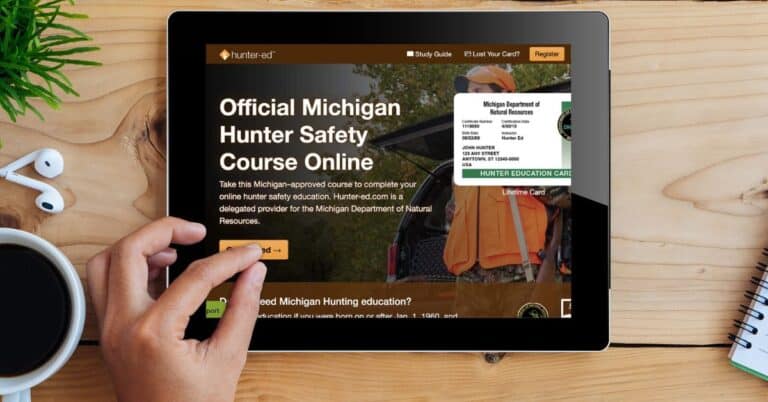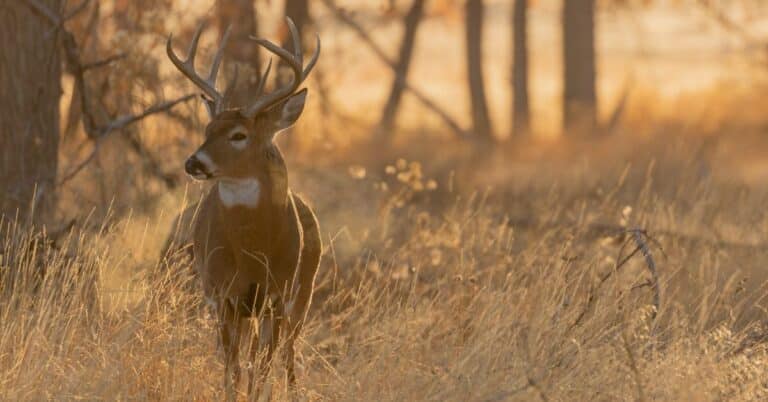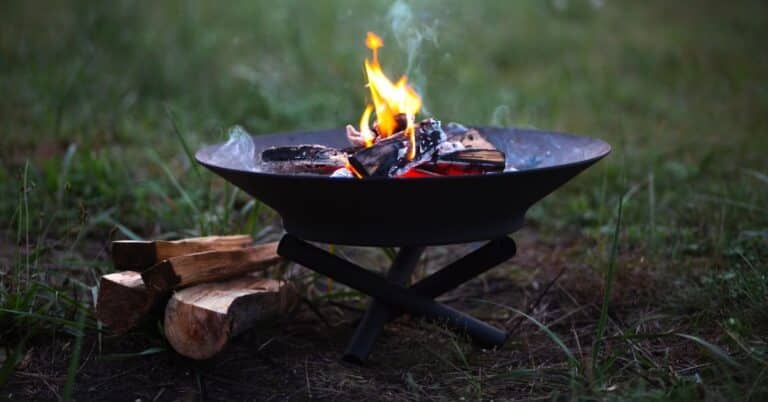Best whitetail deer attractant: A beginner hunting guide
Have you been struggling to attract deer to your hunting spot? Are you frustrated every time you come home empty-handed? As a beginner hunter, you might be feeling overwhelmed by the countless products and techniques out there, unsure of what really works. You want to create the perfect setup that lures whitetail deer into your area, giving you a real chance at spotting that trophy buck.
I want to give you a complete guide to everything that will attract deer to your spot, not just attractants that the next company is trying to sell you. But if you came here for a quick new attractant to try, jump to my favorite attractants listed later in this article.
Comprehensive Approach to Attracting Whitetail Deer
Whether you’re deer hunting for the camaraderie, the challenge of the trophy, or to put meat on the table, one thing remains constant: you need deer in your area to hunt. Attracting deer to your hunting setup can make all the difference. With the right strategies, you can influence deer habits and create a hotspot for your hunting adventures.
Pick the area you want to learn first:
Liquid Deer Attractants
Understanding and experimenting with deer attractants can improve your success. These attractants use powerful smells and flavors to lure deer to your location. The best deer attractant will depend on your specific hunting conditions.
Many experienced hunters will have opinions on what works for them. When fall rolls around, I have had success with liquid scent lures where I hunt in West Michigan. Here are a few I use:
Tink’s Scent Bomb:
It’s a classic and reliable choice I’ve used for years. I apply it to existing scrapes or create new ones. Its scent mimics natural deer smells, which is key during the rut when bucks and does are looking to mate.
The Tink’s® Scent Bomb® is an easy-to-use, effective, and mess-free way to maximize scent lures. Each blaze orange Scent Bomb® features a secure lid, retaining strap, and reflective strip. Fill the 1-ounce container with your favorite Tink’s lure, hang it from a tree, and let the super-absorbent wick disperse the scent on wind currents. Refillable, reusable, and also useful as a yardage or trail marker, the Scent Bomb® comes in a pack of three, making it an essential, functional tool for hunters.

Code Blue:
This one uses urine from farmed deer. It’s consistent and reliable, which is great when I want a scent that deer recognize and trust. Each scent lure is strategically placed near deer trails or scrape sites. Wind direction and terrain play a big role—I want the scent to carry effectively through the woods, guiding deer right to my hunting spot.
Raw Frozen Scents:
These are as natural as it gets. They’re collected from deer during estrus without any preservatives, so they smell just like the real thing. I find they’re particularly effective when I want to attract deer looking for mates.
For those looking for high-quality deer scents, RawFrozenScents.com offers a variety of options to enhance your hunting strategy. If you’re tired of ineffective deer scents, give RAW Frozen Scents a try.
I use their certified “peak” estrus products with estrogen levels of 30+ pg/mL, and they’ve transformed my hunts. These scents are flash-frozen to stay fresh without preservatives and are 100% pure with no added water.
Thanks to synchronization technology, RAW collects scent year-round, ensuring it’s always fresh. In my experience, these scents are 53.2 times more effective than other brands, attracting mature bucks like never before.
VooDoo Deer Lure Spray – “White Hot”
This spray comes recommended by a fellow hunter and can make a noticeable difference in your hunting success.
hunting methods for attractants
Four Techniques When Using Liquids
Imagine standing silently amidst the whispering woods at dawn, preparing to deploy a secret weapon: liquid deer attractants. Use attractants to create a scent trail leading to your hunting setup. These potent scents are not just tools but keys to unlocking the mystery of luring deer closer.
Spray Your Feet
Before walking to your hunting spot or treestand, spray a little “White Hot” on your feet. This helps create a scent trail.
Apply to a Tree Branch
Find a tree branch within shooting range of your hunting spot and apply the spray liberally. Choose a branch with leaves for better scent dispersion.
Add to Tree Base
If you’re in a treestand, you can also add the spray to the base of your tree to further attract deer to your location.
Make a Deer Drag
Spray attractant onto a branch and then drag it through the woods, creating a scent trail to your hunting spots.
Using these products and techniques will increase your odds of a successful hunt. Whether you’re targeting a big buck or trying to attract a herd, these attractants can help make your hunting season more productive and enjoyable.
Mineral Sites and Licks
The Importance of Minerals
Mineral sites are a fantastic way to attract deer to your hunting area. Deer need trace minerals for antler growth and overall health. By providing mineral supplements, you can attract deer and keep them returning to your property.
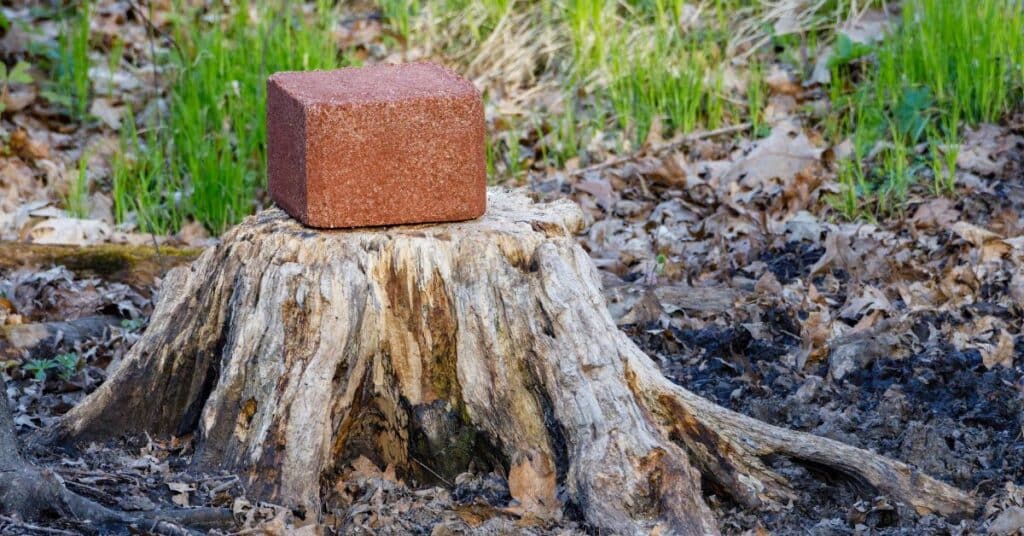
Setting Up Mineral Sites
Set up a mineral site by placing a mineral lick, block or powder, such as Buck Jam, Lucky Buck, Trophy Rock or Deer Cane Black Magic, in a spot where deer frequent. Mineral products are available in various forms, including granular minerals and liquid minerals.
Timing and Placement
The best time to set up a mineral site is in the spring, as bucks begin growing their antlers. Placing mineral licks near food sources or travel corridors increases their effectiveness. Make sure to refresh these sites on an annual basis to keep deer coming back.
Creating the Right Habitat
Designing a successful whitetail property can seem daunting, but breaking it down into manageable steps can make it easier. Here are six key elements to focus on:
Safe Fall Food Source
A large food source alone isn’t enough to keep mature bucks on your property. The food plots must be in safe areas, screened from hunter access. This ensures that deer feel secure and establish predictable movement patterns. Diverse, layered food plots can keep deer attracted throughout the season and allow you to hunt without spooking them.
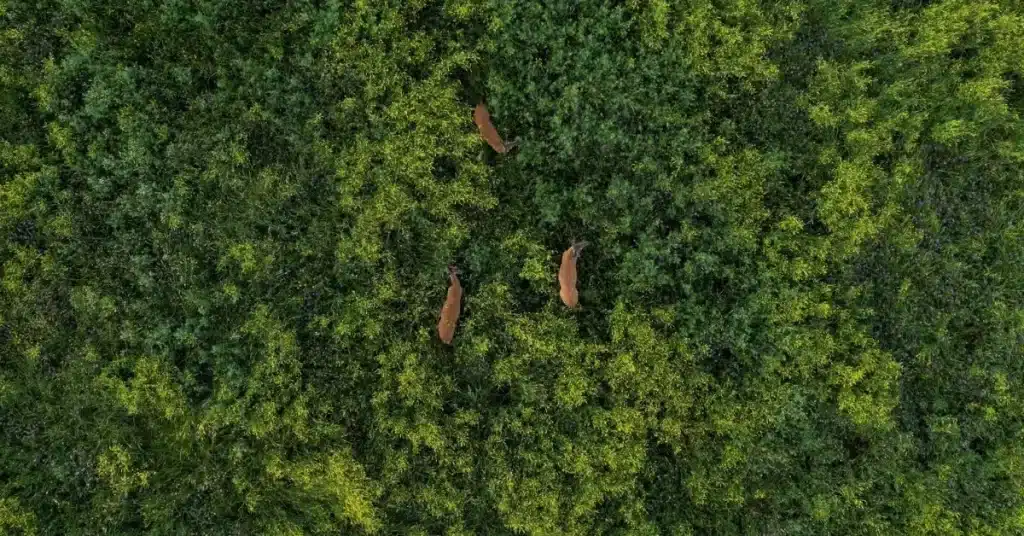
Adjacent Doe Bedding Opportunities
Does prefer to bed near their food sources. Creating bedding areas next to your food plots will attract does and fawns. Screen these areas with switchgrass, hinge-cut the adjacent timber, and reduce hunting pressure to keep them comfortable. Defined doe bedding areas help you manage deer movement and keep the herd close.
Buck Bedding Opportunities
Where does bed, bucks will follow. By providing bedding areas near food sources for does, you create nearby opportunities for bucks. This setup encourages better daytime movement and keeps bucks from wandering to neighboring properties. Your goal is to compact deer movement on your land, making it easier to hunt.
Travel Corridors
Defining travel routes between habitat improvements allows for precise stand locations. By creating corridors through shrub-country or mowing through grasses, you can guide deer within bow range. Well-defined travel routes between buck and doe bedding areas and food sources offer multiple stand opportunities.
Creating Edge Habitats
Edge habitats are transitional zones between different types of vegetation, such as where a forest meets a field. These areas provide excellent cover and feeding opportunities for deer. By creating edge habitats on your property, you give deer a place to hide and feel secure. Planting a mix of shrubs, grasses, and young trees along these edges can create ideal conditions. These habitats encourage deer to move more freely and stay longer on your property.
Deer Scrapes
A mock scrape is a strategic hunting technique where hunters simulate natural deer behavior by creating spots where deer paw at the ground and leave their scent, typically under low-hanging branches in the woods. These features can control deer movement and offer great opportunities to harvest a mature buck. Multiple stand locations around these features allow you to hunt in various conditions.
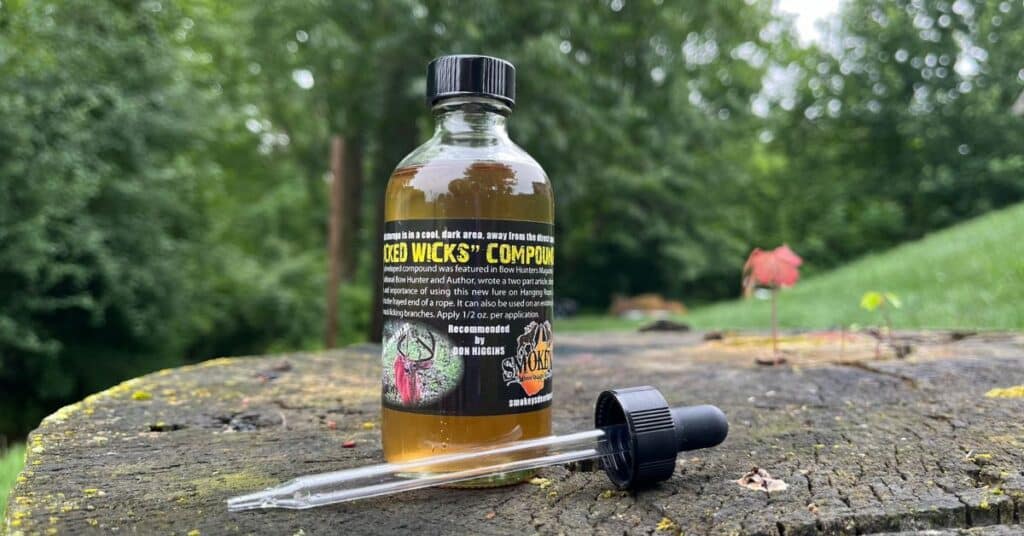
Building a Mock Deer Scrape:
Creating mock scrapes is a key part of my deer hunting strategy. These are spots where bucks mark their territory by pawing the ground and leaving their scent, usually under low-hanging branches. This year I’m experimenting with a product called Wicked Wicks to enhance these scrapes. It’s a clever setup—I hang a hemp rope with frayed ends from a branch above the scrape and apply the Wicked Wicks preorbital gland lure to it. Over time, the rope weathers in the elements, becoming a natural attractant that deer can’t resist.
These mock scrapes aren’t just for the rut; deer visit them year-round. Outside of mating season, they come to rub their heads on the ropes, leaving their scent and marking their presence. It’s like setting up a communication post for deer. I’ve set up trail cameras near these spots to monitor the local deer population—it’s a great way to scout for the upcoming season.
Another pre-orbital gland lure you can use all season is Buck Fever Synthetics. One hunting friend said “Had a buck show up just a few hours after putting it out. Have had numerous deer coming in checking it out.”
Water Sources
Attractions like waterholes or finding natural water sources can increase your success. Deer need water on a daily basis, making water sources an excellent attractant. A well-placed water hole can draw deer to your hunting area. Natural ponds or man-made water sources both work well.
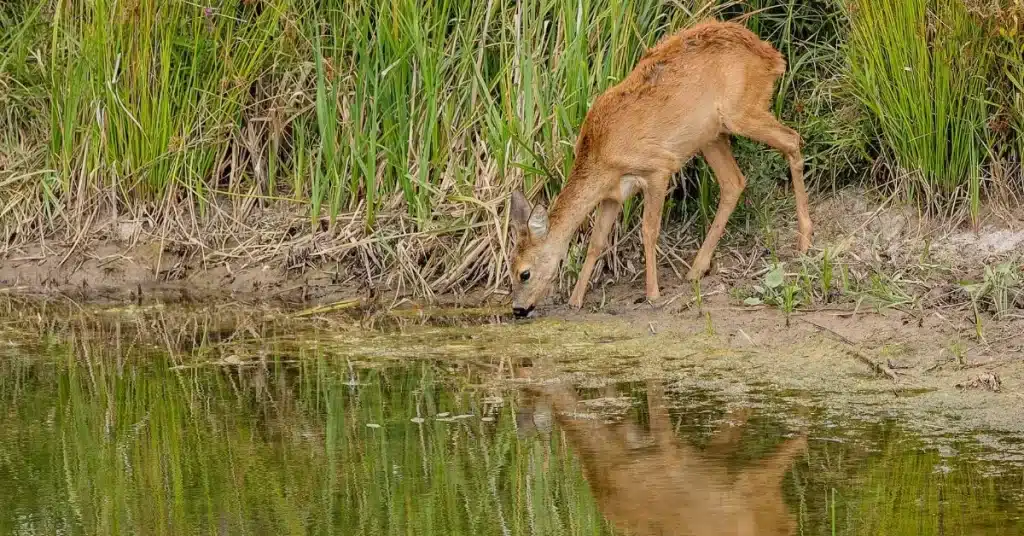
Enhancing Water Sources
Adding mineral salts or liquid products to water sources can make them even more attractive to deer. Products like solar salt and ice cream salt can be added to water holes to provide necessary minerals. Ensure the water source is clean and accessible throughout the season.
Food Plots
The Time-Tested Strategy
Food plots have been a staple in deer hunting for generations. Deer are naturally drawn to food sources, and by creating plots specifically for them, you can increase your chances of a successful hunt. Natural food plots like acorn masses and large crop fields are effective, but planting specific crops can make your setup even more enticing.

Planting for Success
From large fields of forage soybeans to small patches of brassica, a variety of crops can attract deer. Corn, milo, turnips, peas, clover, and alfalfa are all excellent choices. Whitetail deer are ruminant animals that need quality protein and fiber to thrive. By providing these food sources, you can ensure that deer frequent your area and stay longer.
Consider the Time of Year
The time of year plays a crucial role in the effectiveness of food plots. In late summer, deer are looking for high-protein foods to prepare for the rut and winter. Early season food plots, such as clover and alfalfa, provide the necessary nutrition. During bow season, make sure your plots include crops like turnips and brassicas to keep deer coming back.
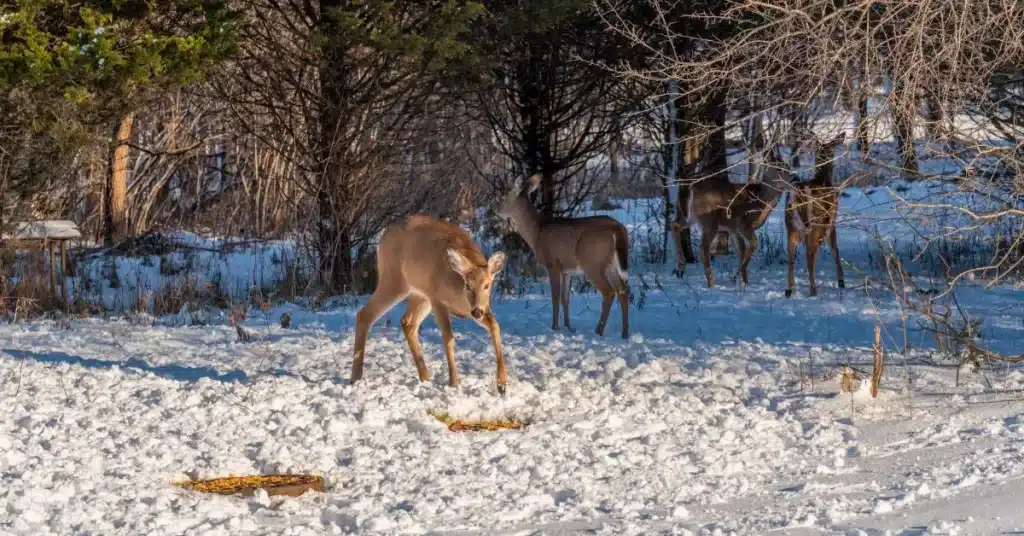
Baiting
Baiting is another highly effective method to attract deer. A pile of corn, a gravity feeder filled with grain, or a prepared liquid bait can be irresistible to deer. The nutritional demands of the breeding season, harsh winter conditions, and post-rut recovery drive deer to seek out the most nutrient-dense food they can find.
Stay Within the Law
Baiting laws vary widely, so it’s crucial to know and follow state and local regulations. Some states allow hunting directly over bait, while others have specific distance requirements or seasonal restrictions. By understanding and adhering to these rules, you can use bait to manipulate deer movement and create hunting opportunities while staying within the law. Michigan has specific rules about baiting for deer though so be sure to read up on the DNR rules.
Bait Sites
Bait sites should be strategically placed to maximize their effectiveness. Consider setting up a bait site near a known deer trail or bedding area. Use a trail camera to monitor activity and determine the best time to hunt. Always check the regulations in your area before setting up a bait site.
WHITETAIL DEER FAVORITES
Best Budget-Friendly Baiting Ideas
Attracting deer doesn’t have to break the bank. Corn is one of the cheapest and most effective bait options. You can buy it in bulk from a feed store, and it will last a long time. Corn piles can attract deer for days, making it an excellent option for long-term baiting. Here are four more of the most cost-effective baiting options that you can buy at local farms, feed, or agricultural stores:
Sweet Feed
Sweet feed, a mix of grains and molasses, is irresistible to deer. Create a long-lasting bait site with this option.
Peant Butter
Spread it on tree trunks to attract deer with its strong scent, keeping them coming back.
Rice Brand
Rice bran is a cheap, nutritious bait. Spread it on the ground or mix with other bait.
Sugar Beets
Scatter sugar beets along deer trails and near feeding areas in the fall where deer naturally travel and forage.

Pumpkins for Fall Bait
As the fall season approaches, pumpkins become an excellent bait option. Pumpkins are not only plentiful during this time of year, but they are also highly attractive to deer. Simply break open a pumpkin and scatter the pieces around your bait site. The sweet smell and taste of pumpkins can draw deer from a distance, making them a great addition to your baiting strategy in the fall.
If you want to learn more about attracting whitetail deer keep reading. Because scent control, shooting lanes, deer behavior, and more can have an impact on your success.
More Deer Hunting Tips
The Importance of Scent Control
Deer have an incredible sense of smell, and controlling your scent is crucial. Use cover scents to mask your human odor and avoid detection. Products like scent eliminators and scent-neutralizing sprays are effective.
Best Practices for Scent
Shower with scent-free soap and wash your clothes in scent-free laundry detergent. Store your hunting gear in a sealed bag with a cover scent. Always pay attention to the wind direction and set up your stand downwind of deer trails and food plots.
Shooting Lanes
Clear shooting lanes are essential for a successful hunt. Trim branches and clear brush to create a clear path for your shot. Use a trail camera to monitor these lanes and determine the best time to hunt.
Place your stand in a location that offers multiple shooting lanes. Consider the wind direction and deer travel patterns when setting up your stand. This will increase your chances of a successful shot.
Learning from Others
Joining a forum community is a great way to learn from other hunters. Share your experiences and gain insights from hunters with similar interests. You can find tips on the best attractants, bait sites, and hunting strategies.
Popular Forums
Some popular forums include HuntingNet.com, DeerHuntingChat.com, and ArcheryTalk.com. These communities offer valuable information and support for hunters of all levels. Engaging with other hunters can provide new ideas and improve your hunting success.
Public Land Hunting
Challenges and Opportunities
Hunting on public land presents unique challenges but also offers great opportunities. Scouting is key to finding a good hunting spot on public land. Use a trail camera to monitor deer activity and identify the best locations.
Legal Considerations
Always check the regulations for public land hunting in your area. Some public lands have specific rules regarding baiting, stands, and attractants. Following these regulations ensures a legal and ethical hunt.
Deer Behavior
Understanding Deer Patterns
Understanding deer behavior is crucial for a successful hunt. Deer are creatures of habit and follow predictable patterns. Monitor their movements with a trail camera and adjust your strategy accordingly.
Seasonal Changes
Deer behavior changes with the seasons. In early season, deer are focused on feeding and preparing for the rut. During the rut, bucks are more active and may be seen during daylight hours. Post-rut, deer focus on recovering and finding food sources.
Attracting Whitetail Deer Results
Every hunter is going to have their own advice and strategy that works. There are numerous products on the market and you could spend a lot of time and money trying them all. Understanding the best budget-friendly bait options can help you maintain an effective baiting strategy without breaking the bank. My advice is to try a few low cost options first and pay attention to the factors that matters.
Attracting deer to your hunting setup involves a mix of strategies, from liquid attractants to minerals and habitat improvements. By using these various methods and products, you can significantly increase your chances of a successful and enjoyable hunting season. Good luck, and happy hunting!


